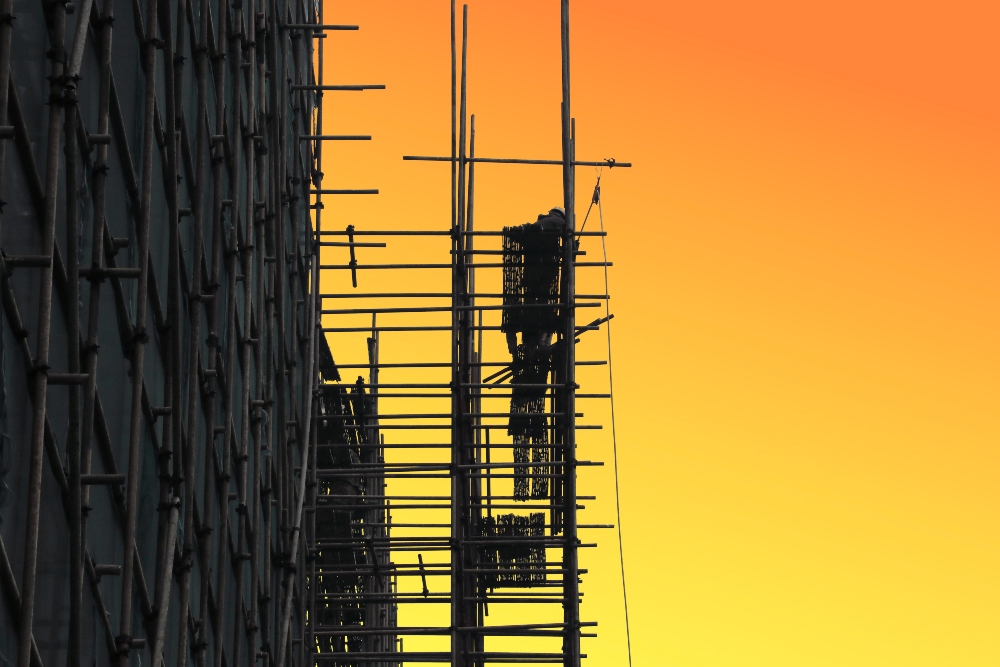
What is a work at height rescue plan?
A work at height rescue plan is essential for all companies, businesses and workplaces where employees work at height. Employees are working at height if they:
- work above ground or floor level
- could fall from an edge, opening or surface
- could fall from ground level into an opening or hole in the ground
In these scenarios, a work at height rescue plan is an important and essential procedure to prevent accidents while working at height. In most cases, a work at height rescue plan can be the difference between life and serious injury (or even death).
What work at height requires a rescue plan?
As an employer, company or business, you are legally required to have an up-to-date working at height rescue plan if your employees are at any risk of injury when working from height. This is to ensure that your work is in line with the government's Work at Height Regulations (2005).
Examples of work at height include:
- Working on a ladder or stepladder
- Working from or on a vehicle above ground level
- Working on a fragile surface that someone could fall through from one level to another
- Working on platforms such as scaffolds, tower scaffolds, cherry-pickers, scissor lifts and podium steps
What should a working at height rescue plan include?
A work at height rescue plan is an extremely detailed document. This is to show that you have assessed every possible risk and developed a comprehensive rescue plan in response to any potential injury.
It is also important to include the rescue plan for any work at height associated injuries, such as:
- Falling from a height
- Slipping at height
- Injury or concussion from falling objects
- Medical emergencies that result in a fall from height (heart attack, fit, stroke, etc.)
- Falling to below ground level
1. Risk Assessments
It is essential that you perform a risk assessment and include it in your working at height rescue plan. A comprehensive risk assessment will look at all potential hazards and risks while working at height. It will then outline how these risks can be eliminated or reduced as much as possible.
Ensure that you identify any hazards, who could be harmed, the impact of any risks and any precautions that should be taken in the event of an emergency. It's vital that your risk assessment is reviewed periodically to keep it up-to-date and effective.
2. Rescue Steps
The rescue procedure will help others carry out the necessary steps to prevent (or reduce) the effect of the working at height incident. To develop your work at height rescue procedure, include the answers to the following questions:
- How will a suitable rescue system (self-evacuation, lowering, raising) be chosen by the rescuers?
- How many people can be involved in the rescue scenario?
- Where can the rescue equipment be found quickly and accessibly?
- What are the risks?
- Who is the fully trained individual in charge? What if they're not available?
Once you have designed your working at height rescue plan, you should ensure that all employees have suitable training and are aware of how to put the plan into action.
The rescue plan must be updated regularly to maintain efficiency and relevance.
3. Equipment
When assessing the risks for a certain working at height task, you will have to consider the characteristics and considerations of the equipment needed to effectively carry out the rescue procedure. There are many pieces of rescue equipment that can be used when working at height, including descenders, harnesses, rope clamps and anchor devices.
It's important that your work at height rescue plan includes:
- How to configure the specified rescue equipment
- Where to find the rescue equipment
- The location of any anchor points on the rescue equipment
- How to use the equipment in a rescue situation
- Any risks or limitations of the equipment
- Any external factors that could affect the rescue (e.g. extreme weather) and how to combat this in a rescue situation
Life-saving tip: It's vital that your rescue equipment is inspected, maintained and serviced regularly. Take a look at these relevant resources below...
4. Medical Assistance
In the event of a working from height emergency, you may need to administer first aid and medical assistance to the affected person(s). In unfortunate cases where an ambulance needs to be called, you must ensure that the correct medical assistance is administered while waiting for help.
Any worker that could be involved in a work from height injury must be trained in first aid. Your work at height rescue plan should include details on where, how and when to obtain the relevant medical assistance, alongside the location of an accessible and fully-stocked first aid kid.
Why do I need a work at height rescue plan?
As an employer, you are responsible for the health and safety of any of your employees when working at height. There is a legal duty to comply with the working at height regulations and conduct the necessary risk assessments to keep your employees safe at work.
A work at height rescue plan is one of the most important protective procedures a business can have. Ultimately, it saves lives and prevents major injuries to those at risk of injuries at height.
We're proud to be a UK supplier of safety harnesses and other height safety products.
For more tips and tricks regarding safety equipment and working at height, contact us or give us a call at 01446 788 978.

